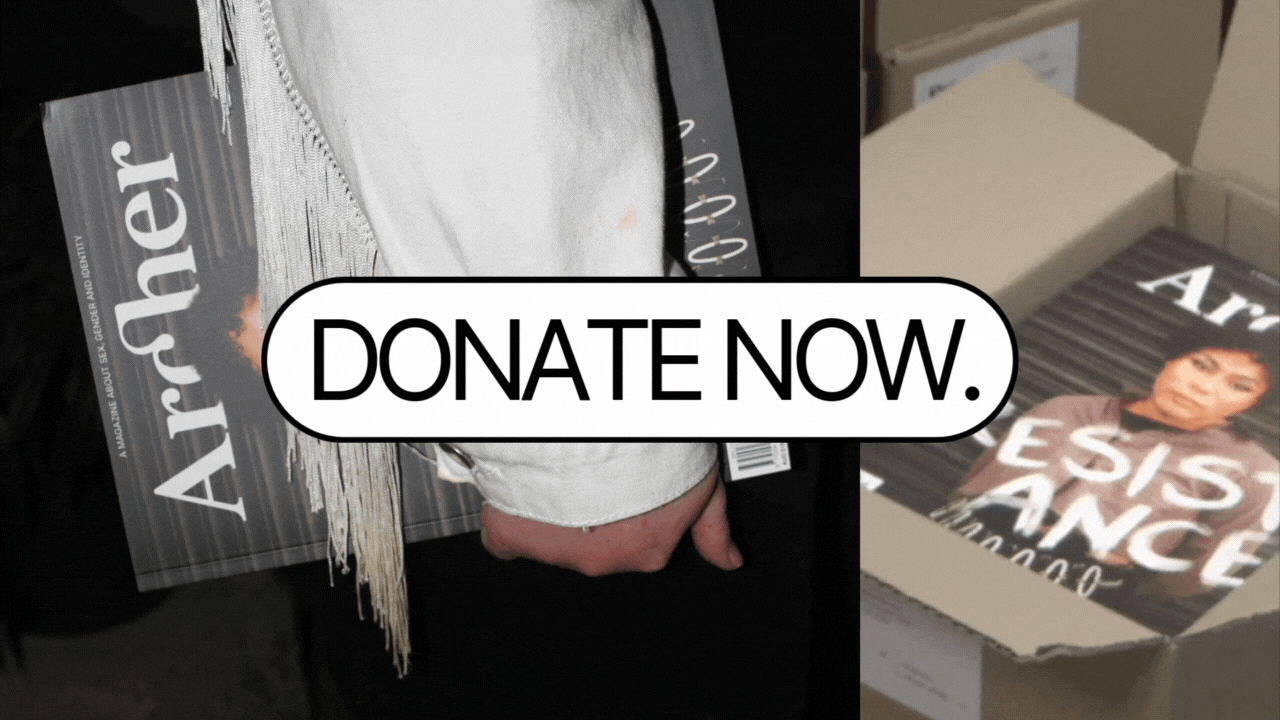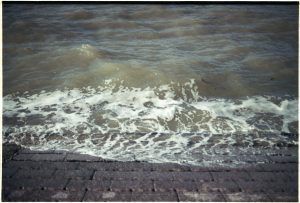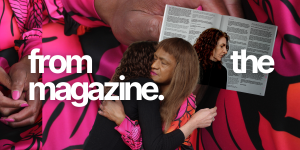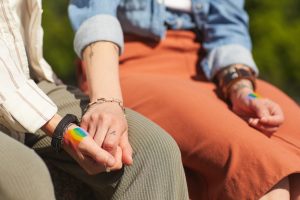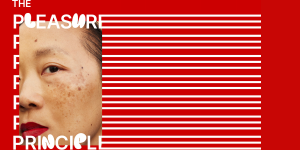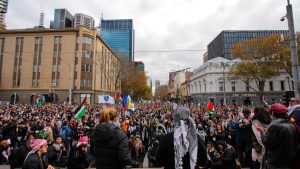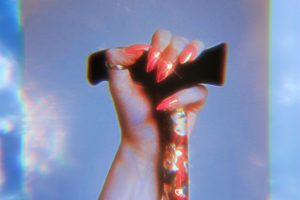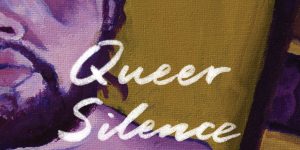Medical gaslighting, illness and community care: Pins and needles
By: Kator
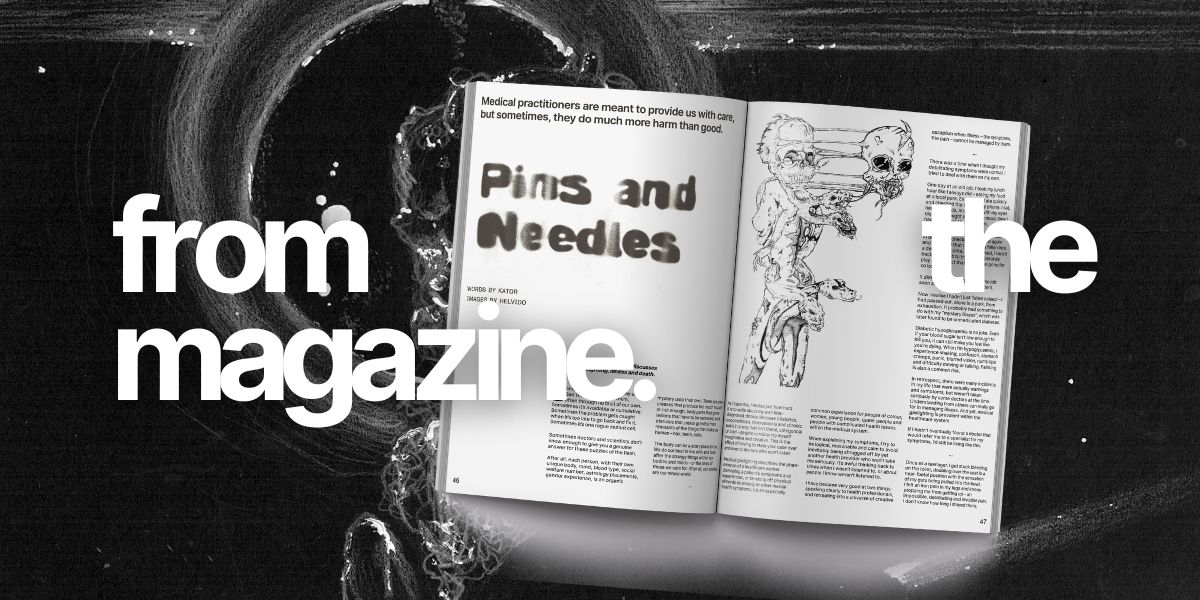
Content warning: This piece discusses medical gaslighting, illness and death.
Sometimes our bodies betray us.
Bad things happen to them, often through no fault of our own. Sometimes it’s avoidable or cumulative. Sometimes the problem gets caught when it’s too late to go back and fix it.
Sometimes it’s one rogue mutant cell.
All images: Helvido
This article appears in Archer Magazine #20: the RESISTANCE issue – buy a copy here.
Sometimes doctors and scientists don’t know enough to give you a genuine answer for these puzzles of the flesh. After all, each person, with their own unique body, mind, blood type, social welfare number, astrology placements, gender experience, is an organic mystery unto their own.
There are pancreases that produce too much insulin or not enough, body parts that grow lesions that have to be removed, and uteruses that create growths from remnants of the things that make us human – hair, teeth, nails.
The body can be a scary place to be. We do our best to live with and look after the strange things within our bodies and minds – or the ones of those we care for.
After all, our bodies are our whole world.
As I type this, I realise just how hard it is to write about my own late-diagnosed chronic illnesses (diabetes, endometriosis, macromastia and chronic pain) in a way that isn’t literal, categorical or cold – despite considering myself imaginative and creative. This is the effect of having to state your case over and over to doctors who won’t listen.
Medical gaslighting describes the phenomenon of a healthcare worker dismissing a patient’s symptoms and experiences, or brushing off physical ailments as anxiety or other mental health symptoms.
It’s an especially common experience for people of colour, women, young people, queer people and people with complicated health issues within the medical system.
I have become very good at two things: speaking clearly to health professionals, and retreating into a universe of creative escapism when illness – the symptoms, the pain – cannot be managed by them.
There was a time when I thought my debilitating symptoms were normal. I tried to deal with them on my own.
One day at an old job, I took my lunch hour like I always did – eating my food at a local park. Exhausted, I ate quickly and checked the time on my phone. I sat, head in hands, and rested with my eyes closed. I thought about how much time I had left before I had to return.
Before I knew it, two hours had passed. In disbelief, I checked my phone again and assumed that I must have fallen into a deep ‘food coma’. Embarrassed, I raced back to the job to try and desperately play off the fact that I had been gone for so long.
It didn’t matter though – I lost the job soon after, likely from that incident.
Now I realise I hadn’t just ‘fallen asleep’ – I had passed out, alone in a park, from exhaustion. It probably had something to do with my “mystery illness”, which was later found to be unmedicated diabetes.
Diabetic hypoglycaemia is no joke. Even if your blood sugar isn’t low enough to kill you, it can still make you feel like you’re dying.
When I’m hypoglycaemic, I experience shaking, confusion, stomach cramps, panic, blurred vision, numb lips and difficulty moving or talking. Fainting is also a common risk.
In retrospect, there were many incidents in my life that were actually warnings and symptoms, but weren’t taken seriously by some doctors at the time.
Understanding from others can really go far in managing illness. And yet, medical gaslighting is prevalent within the healthcare system.
If I hadn’t eventually found a doctor that would refer me to a specialist for my symptoms, I’d still be living like this.
Once as a teenager, I got stuck bleeding on the toilet, doubling over the seat in a near-foetal position with the sensation of my guts being pulled into the bowl.
I felt an iron pain in my legs and knees stopping me from getting up – an impossible, debilitating and invisible pain.
I don’t know how long I stayed there, but I know why I didn’t call for help – the pain was untreatable. Over-the-counter painkillers were the only option, and they didn’t work.
Over 15 years later, I had laparoscopic surgery for endometriosis.
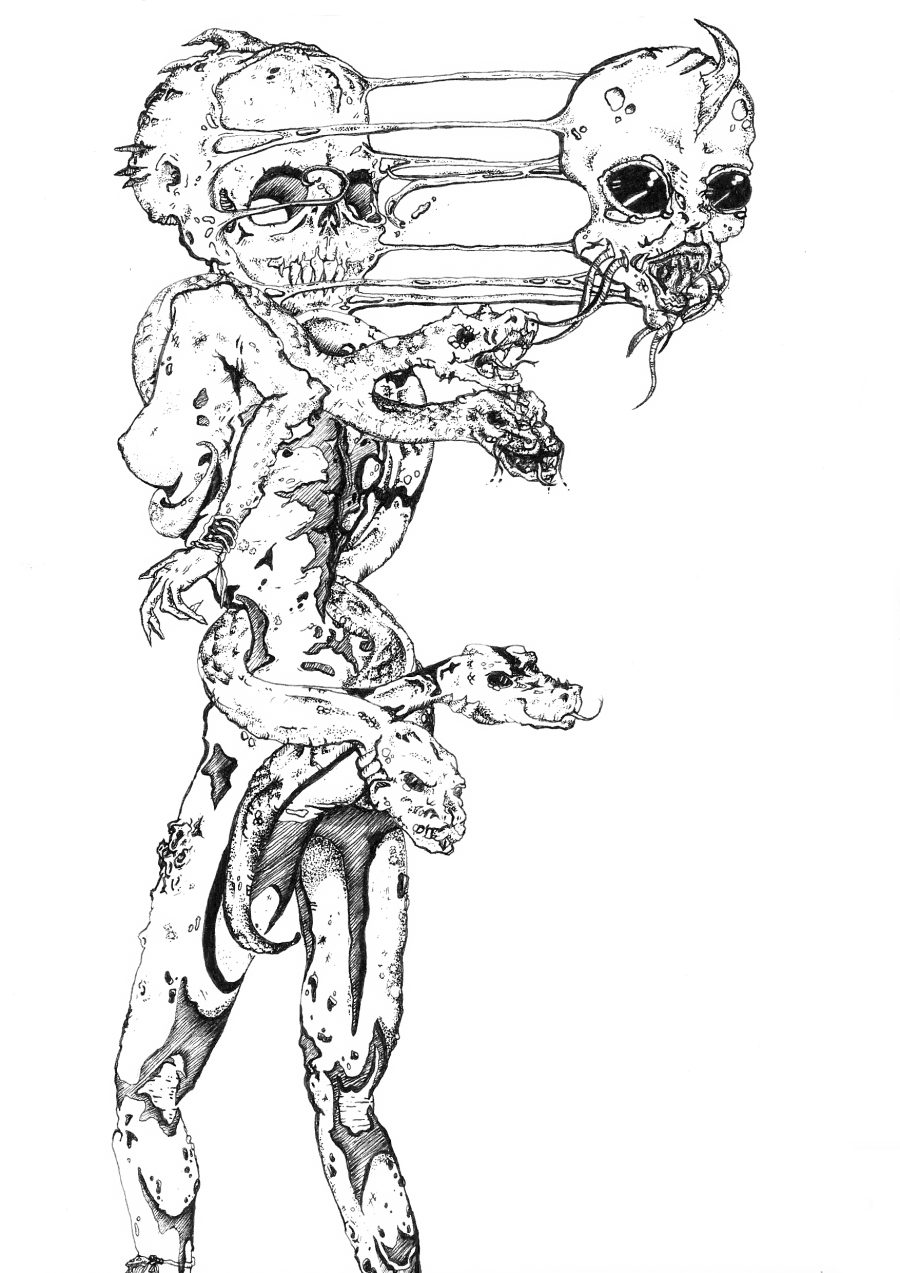
Illustration by: Helvido
As a young person, I didn’t know what endometriosis – or even a uterus – actually looked like, but the gory entrails and tendrils I saw on the VHS covers of horror movies seemed to fit my experiences of pain.
I’d seen my mum suffer endlessly from the horrible pain of this “belly problem” that plagued her side of the family.
Genetics, I came to find out, are a microscopic code, a list, a script, of so many things about our bodies accidently written by all our ancestors before us.
When I got my first period, I decided I wanted no part in this completely alien ‘feminine’ experience.
I announced to a girl at school that I would simply not wear a pad or tampon and that it would stop. It was wishful thinking, and I was sure it would work.
I was perplexed as to how a period could be ‘normal’ and happen to everyone with a uterus. I associated periods with pain because of all the surgeries and pain my mum had.
I later realised that I’m transmasc. Experiencing endometriosis as a transmasc person felt like the ultimate betrayal of my own body. A slap in the face.
On top of that, I developed macromastia – a painfully enlarged chest that is highly visible in public, bringing unsolicited and inappropriate comments.
The symptoms of my physical body caused dysphoria in hyperdrive. The pain and discomfort from both conditions, along with the dysphoria, was utterly soul-crushing.
The problems in my body made it hard to participate normally in the world around me as a teenager.
I was always in pain, hypoglycaemic, fatigued, light years away and mentally checked out. My only real option back then was distracting myself from the reality of what was going on.
I began to use art to both express and escape from my experiences of illness, taking inspiration from the genres of body horror and science fiction.
My pain, discomfort, feelings of futility and body horror, imagination and escapism are all intertwined.
I identified strongly with Pinhead, the infamous villain from the Hellraiser movie series, whose bald head is embedded with nails.
Pinhead’s pain evolves him into a multidimensional demon who can be summoned through a puzzle box by those curious enough to seek the ultimate human experiences.
In the Hellraiser universe, each victim thinks the transcending sensation will be pleasure, but it always ends up being pain.
Perhaps with my belly full of blood, sore concrete back, electric sciatic nerves, huge chest and unending hypoglycaemia, I could transcend the normal world and find myself in the universe of David Cronenberg’s Videodrome and the band Autopsy, an ’80s death metal band that had a guy being ripped apart by metal hooks on their cover.
I’d spend all day painting, playing guitar and decorating my big denim vest with studs and the art of my favourite bands and movies.
Among the unfinished paintings in my collection is a painting of contorted anatomy: a human head, giving birth to another human head, through the mouth of another third tortured humanoid face.
The pillar of heads grimace and wail in pain, spewing forth from an impossible continuum of tissue.
When I created art, it didn’t matter that I would black out in pain during maths class, or that a local kid would throw old sandwiches at me from the school bus, or that I was the laughing stock of my year level for being an androgynous “it”.
My denim vest was an affront to my body and everyone who looked at it. It covered my chest, and I was only ever happy when I was wearing it.
I never imagined meeting people who understood me – not just doctors, but peers.
Finding other queer people helped me realise there was nothing wrong with who I was – the world just needed to catch up to my experiences. Coming to terms with my queer identity was similar to coming to terms with my diagnostic labels.
As an adult, I started to meet people who had almost identical chronic illness experiences, and to hear their stories was a revelation.
Then one day, I met Jewel.
Jewel was incredible. She was a music nut, art and craft master, space cowboy and psychic voyager.
She was half-Filipino and all trouble. I don’t have the words to do her justice, but she was stunning, diabolical, unique and wonderful in all the best ways, and after a few strange encounters, we were best buds.
She once admitted to me that she had spotted my signature vest a year before meeting me in the crowd at a festival, and she thought it was cool.
I was her biggest fan, and she was sort of like an older sister, a terrible influence, and an agent of chaos and magic in my life.
Never in my life had I met someone truly like her. She supported my band and supported me when I came out. She also loved Pinhead from Hellraiser, Cronenberg’s Videodrome, art and music, my denim vest, androgyny and the quest for escapism.
Most of all, she understood me – there were times when together it felt like we both had access to the same imaginative realm.
We travelled together, saw our favourite bands together, played music together, lived together, and when she moved to Berlin for six months, unable to cope with the distance, we Skyped together.
As I was finally coming to the end of my diagnostic journey and regaining my health for the first time since before puberty, Jewel started experiencing her own mystery symptoms.
Swollen lymph nodes, chronic body pains, insomnia, headaches, light sensitivity, lethargy, fatigue, weakness: the symptoms went on. Jewel saw doctor after doctor and had test after test for about a year, until one day, with a medicinal heat gel in hand, she announced, “They just keep telling me I’m anxious and tired.”
I recognised Jewel’s experience as textbook medical gaslighting – just as I had endured throughout my life.
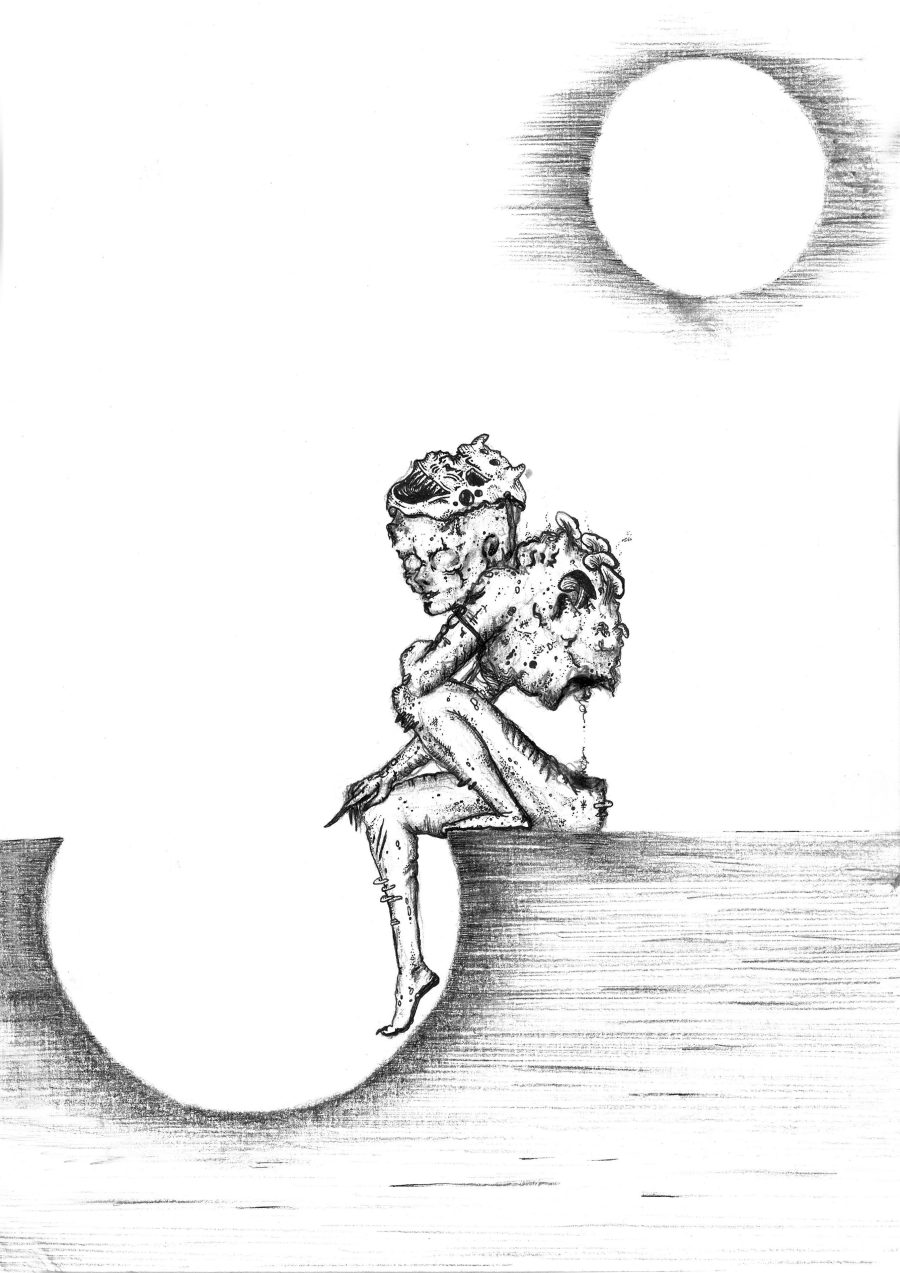
Illustration by: Helvido
Jewel told me she had spent so much money, and not been listened to so many times, that if doctors could not find what was wrong with her, she would fix it herself.
She even got halfway through a course in natural medicine before ironically having to drop out due to her symptoms.
She implemented an arsenal of remedies from her course: strong, fresh and organic foods, chlorophyll, antidepressants, iron tablets, caffeine tablets, gingko biloba, vapour rub, a transcutaneous electrical nerve stimulation (TENS) machine for pain relief, an acupuncture pen, teas, a Chinese medicine foot stand, Valium, antihistamines, turkey tail mushroom, crystals, and a phallic-looking wooden massage tool she used to call “bally shafty” (in a cockney accent). The list went on and on.
Jewel would often discuss potentially having fibromyalgia or another elusive disease that doctors couldn’t pick up on.
On what was probably the third year of the mystery illness, everything shifted focus when Jewel’s partner passed away suddenly.
The health system failed him in a way, too: mental illness isn’t a terminal condition, but it can be just as deadly and twice as quick.
To say the loss was devastating isn’t enough.
Jewel persevered with music and art in attempts to memorialise, gain momentum and recover from the loss of someone so important. Her health problems persisted, now having taken a backseat to the emotional distress she was in.
I tried my best to support her, and always determined, I watched her slowly heal, get her life together and join a new band.
Eventually, Jewel even started seeing people again. She had big plans with her band, and had finally managed to book in to get an investigative laryngoscopy for the swollen feeling in her throat that had been persistent for years.
She was worried whatever it was would affect her singing. Jewel was still very much mourning, but with hope for the future.
In 2020, Jewel developed a small lump in her breast, which she had examined by a doctor.
“This is it. I’ve got a bad feeling. I know it,” she texted me.
I assured her it was probably benign.
Two weeks into the first Covid-19 lockdown, and I got an unexpected knock on the door while I was doing the dishes, to find Jewel at my doorstep. She had come to tell me that she’d been diagnosed with triple-negative stage 4 metastatic breast cancer that had spread to her lymph nodes and bones.
She had been given three months to live without chemo. The laryngoscopy was cancelled.
She’d known for years that something was wrong. Now it was too late.
Navigating cancer treatment – orthodox and experimental – during the height of the pandemic was a practical, financial and emotional nightmare.
Jewel wasn’t allowed support people in her meetings with doctors or chemo sessions. She did most of it all alone. Visiting her in hospital was tricky, but thankfully I was able to spend a lot of time at home helping and hanging out with her.
As lockdowns were slowly lifted, we were even able to hold a massive fundraiser gig for Jewel, featuring her band and the bands of our friends. Over a year and a half of campaigning, we raised $42,000 towards her cancer treatment.
I have a memory of watching Jewel paint in her hospital bed.
She was adorned in red, purple and gold exotic fabrics. This memory reminds me of Frida Kahlo, one of the many artists Jewel admired, and an icon of art in the face of disability and suffering.
I thought of this image again, months later, when bedside art sessions became difficult due to her pain. The cancer had ravaged the bones in her spine so badly that they had become weak and fractured.
Before long, Jewel’s only option for pain management was palliative care.
She was one of the only patients on the ward receiving ongoing cancer treatment as well as end-of-life care, on the off-chance that radiation therapy might give her more time.
She had become Kahlo’s The Broken Column (1944): a picture of resilience, creativity, vibrant imagery and, of course, pain. She decorated those cold, white hospital walls with her colourful fabrics, statues of Vishnu, beads, musical instruments, crystals and light projectors that reflected all those spectrums of red, purple and gold, and moving images of planets and galaxies.
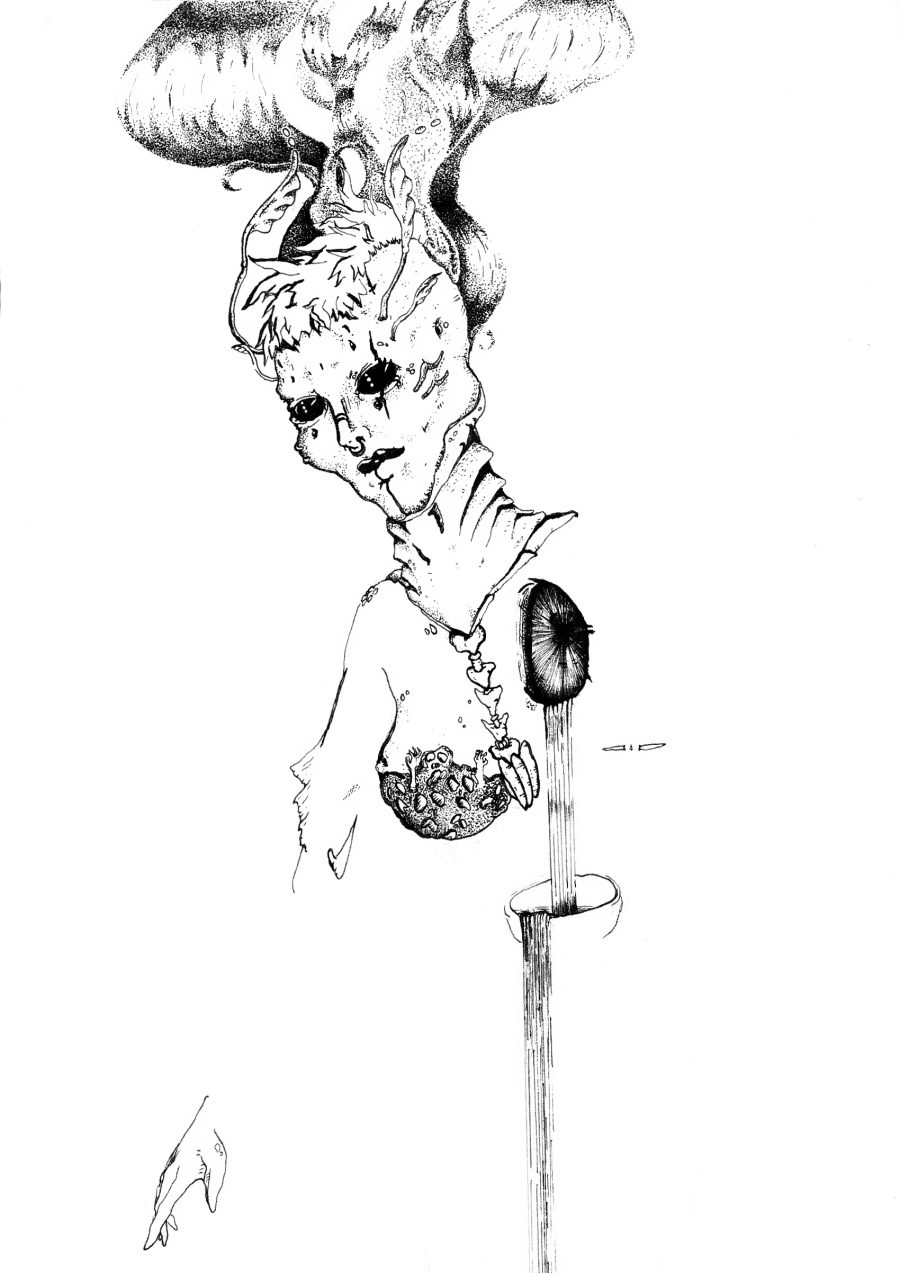
Illustration by: Helvido
We knew we didn’t have much time left together.
It was a scary time, but Jewel remained fierce, brutally honest and hilarious through the whole journey, pushing herself to her limits just as she had when her partner passed.
She continued to play shows and engage in as much treatment as she could, speaking publicly with people about her journey.
Jewel encouraged the people around her – especially women – to advocate for themselves and their health.
Even though Jewel had a diagnosis, she still found that providers wouldn’t listen to her when it came to her treatment.
If her pain changed, or when she knew a treatment wasn’t working, or too high a dosage, we had to advocate strongly for what she needed. Each step of the way, people were shocked by her story, authenticity, wit, humour and deep understanding.
Jewel was incredible. She managed to survive almost two years longer than her prognosis.
She passed away from the disease in May 2022.
I wore my denim vest to Jewel’s funeral and helped decorate, paint and carry her coffin.
Maybe if Jewel had been listened to, or been referred to a specialist, or had some extra tests run, we could have caught early what ended up killing her. I know for sure it could have at least bought more time with my friend, maybe more options.
If not for medical gaslighting, maybe Jewel would still be around but unwell, managing her condition just as I manage mine with medication, rest and surgery.
It’s infuriating enough that she was ignored when trying to get a diagnosis, but it drives me wild that she was still disregarded as her own greatest advocate during her treatment.
Two years on from Jewel’s death to a cancer that could have been caught earlier, and still relenting with the host of illnesses I’ve been living with, I tell these stories in the hope that people will staunchly advocate for their health in the face of medical providers that minimise and ignore their stories.
The medical system can be a difficult game of balancing our energy and our finances to pursue specialised care, and it can be hard not to fall into the trap of invalidating your own experiences.
When you have been living with something long enough, it is easy to trick yourself into thinking that the symptoms of an illness are normal.
As a queer person, it’s ironic that the things we grow up thinking are abnormal – like our queerness – end up being our everyday truths, and the illnesses we endure for so long finally get recognised as abnormal, as is the truth we knew all along.
Perhaps society’s harsh binary approach to everything – male or female, ‘treatable’ or ‘incurable’ – means we don’t peer enough into the spectrum of experiences.
Surely, it’s in that flux where solutions can be found, and questions can be answered.
When it comes to illness, I believe that feelings and sensations are more important than cold hard ‘facts’. But if people in the healthcare system are not treated with respect, and their concerns are not investigated, no diagnosis can be made, and no treatment options are available.
While resisting our pain and suffering can come in the form of escape – through art, music, kinship and more – the best resistance is one that leads toward answers, healing and care, heightened by the support of friends and community.
To quote Jewel: “If you have a doctor that won’t listen to you, find one who will.”
This article first appeared in Archer Magazine #20: the RESISTANCE issue.


